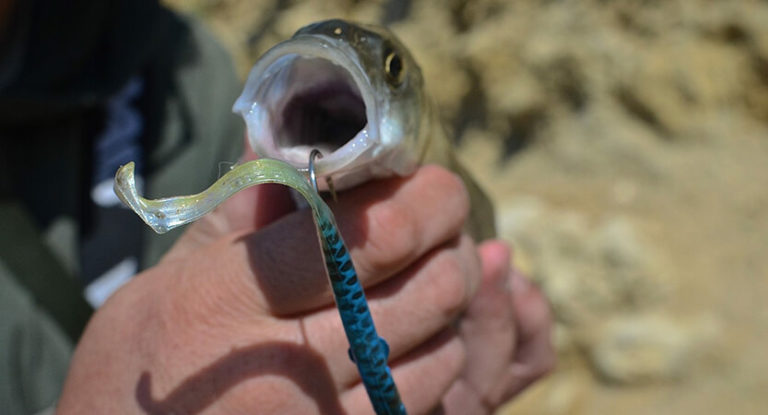Bream belongs to the order of cyprinidae. It has a high body with a noticeable hump, the head is small, the eyes are relatively large. Behind the ventral fins there is an uncovered keel.
Here is an overview of the content of this tutorial, feel free to jump to any section you care about:
For more fishing instructions, take a look at these popular Trizily links: Grouper Fishing, Mullet Fishing.
- The 9 best fishing lines 2022
- The 10 best fish finders for the money 2022
- The 7 best underwater fishing cameras 2022
- The 7 best spinning rods 2022
Bream Fishing
Characteristics of bream
The hunchbacks have silver sides, the back is gray-blue. In spring and autumn forms dense clusters, hence the name came from. The length of this fish can reach 35 cm, and weight – 1.3 kg. However, mainly fish weighing 100-200 g become prey.
Reproduction habit of bream

Spawning takes place in two or three portions with a break of 10-15 days. The diameter of eggs with each udder decreases and varies from 1.2 to 0.2 mm. The total number is 11-109 thousand eggs. In artificial ponds, the number of servings decreases, and some females go to one-time spawning. Spawning time is the end of May and the beginning of June. Duration – from one to one and a half months. Caviar sticks to flooded vegetation, larvae appear after four to six days. Initially, juveniles feed on zooplankton and phytoplankton, after which they are fed in small benthic forms. Bream grows slowly, reaching puberty at the age of 3-4 years.
Bream fishing techniques
The bream is caught on the bottom and float fishing rods. The fish is small and bony, therefore, among anglers, the attitude to this fish is ambiguous. Ideal for sport fishing, because if you choose a promising point and enter the flock, you can catch more than an entire day in less than an hour. In summer, the hustler reacts worse to bait, since other feed is abundant. Everything changes at the beginning of autumn, when the fish prepares for wintering. During this period, the booster actively eats and the nibble improves. When choosing the size of the nozzle and hooks, keep in mind that the bream have a small mouth.

This type of fishing is used only in cases where the fish is located far from the coast, and the fisherman does not have the opportunity to get to the place of fishing. Catching this fish with a dedicated fishing rod designed so bottom fishing is not popular, but when using the “gum” known on the southern rivers, it can give results.
Catching bream on floaters
This small fish is very sensitive to tackle, so the fishing rod should be accurately adjusted. The cross section of the main line should be 0.2 mm, at the end – the leash is not thicker than 0.15 mm. A sinker is used as a composite, sub-stock (with a diameter of no more than 2-3 mm) is placed no more than 5 cm from the hook. Given the curiosity of the bream to all white as possible food, the hook should be painted white. If fishing takes place at a depth of more than 3 m, then a sliding float is used, which, coupled with an inertia-free reel, ensures high-quality fishing from any depth. As with other fish, a good nibble is observed in rain and thunder.
Catch bream with winter gear
In winter, the bream is caught with a fishing rod and freshwater shrimp lure (gammarus). The bite is characterized by jerking, lifting or slight flooding of the float. They feed on bloodworms. It is caught in the freshwater shrimp just like other cyprinidae, except that the size of the bait should be smaller.
Bream fishing bait

The type of bait depends on seasonality. In springtime, the bream prefers bloodworms and dung worms. In summer, there is a weakness for dough and maggot, in the fall the best treat will be clam and freshwater shrimp meat. Excellent results are obtained by feeding the husters both a few days before fishing and directly during the “hunt”. Bream responds very well to a variety of mixtures of plant origin, which are intended for rearing crucians and carps. Bait is carried out in the same way that the fish will be caught, but in quantities that do not allow it to be eaten. In winter or when fishing from a boat, the most optimal solution would be to find a feeder a meter from the location of the hook with the nozzle, a little upstream.
Where to catch bream
It is widely distributed in Europe. It lives in the rivers and lakes of the basins of the Caspian, North Seas, Azov, Black and Baltic. The largest specimens are found in deep irrigation close to the coastal edge on the canals, at the exits from the underwater ditch, in the deep mouth of the tributary channel. He does not favor silty places, since the main food of large fish is invertebrates, and not bloodworms. Adult individuals feed mainly on chironomid larvae, mollusks, caddis flies, algae, detritus, sometimes aerial insects and higher vegetation.






